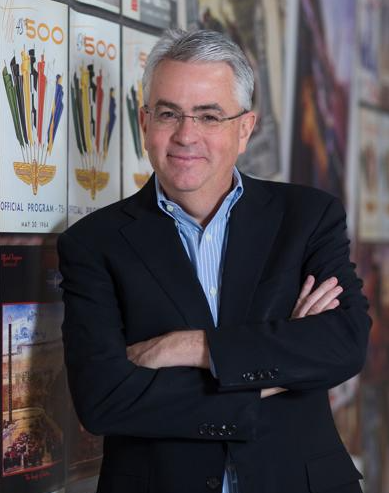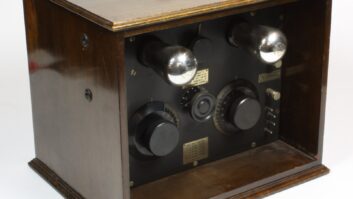The 2022 NAB Show begins April 23. Leading up to the event, we spoke with Mike Hulvey, VP and COO with Neuhoff Communications and NAB Radio Board member, to discuss expectations for the show and gain insight into the future of the commercial radio industry.
Radio World: This is the first time the NAB Show will be back during the pandemic, what are you looking forward to and what do you think may have changed?
Mike Hulvey: Here’s what’s going to happen: for the first 30 minutes of the first event, hugs. Lots of hugs. What has always been a great part of the show is the networking, the opportunities and the conversations. In a lot of cases, it’s been two-plus years since we’ve seen each other. Nothing replaces being together in this space and I think the value of that has only been elevated because of the pandemic.
Some of the changes are structural in terms of what the team has created. We have three pillars around the show: Capitalize, Connect and Create. But from the radio perspective, we have blended what used to be the Radio Show into the NAB Show. When you look at the number of sessions that have been created, specifically for radio, what we’ve seen is that the programming has created a more robust schedule with more sessions geared towards radio than ever before.
[Related: “NAB Show: Third Time’s the Charm”]
RW: Any hopes/expectations of what you want to accomplish at the show?
Hulvey: I can’t overstate the importance of the interaction with attendees and vendors and members of the industry. That will be the one big piece of take home pay, if you will, for attendees, and that is to be able to actually have that interaction with individuals. Learning in the sessions is always important, but that interaction in the hallways and the networking opportunities — there’s so much that comes of that.

RW: Is there any technology you’re planning on exploring while there?
Hulvey: The pandemic accelerated the inevitable. The things that we’re doing now are things that we had planned to do before, but we were looking at two, three, five years to the future — remote work, or streamlining processes, or utilizing technology in different ways. Well, thanks to the pandemic, that was a two week exercise and all of a sudden we’re operating our radio stations in such different ways.
So, what I’m interested in learning more about is “what’s next?” From a vendor perspective, what has been learned from these applications, what broadcasters had to do to survive? So, I’m anxious to see what vendors have to say about that.
[For More News on the NAB Show See Our NAB Show News Page]
RW: How has the commercial radio industry fared these past couple of years?
Hulvey: We’re seeing a number of companies that report their revenue nationally, where revenues are now back to where they were pre-pandemic. We’re seeing growth. Although, that’s not the case everywhere. But here’s the one lesson that resonates everywhere in our industry, and that’s the value of local.
RW: For stations that made it through/thrived these past couple of years, can you think of any common characteristics they shared?
Hulvey: Time and time again, if you think back or talk to local broadcasters about what it was that helped them survive, what it was that connected them to the community, it was local connections, it was local communication, it was being a local service. And that is critical to the economic success of our industry.
If all we are are jukeboxes, well that information and content is available anywhere. But there’s something very unique about a local broadcaster who understands their community and helps solve local problems.
RW: How does the commercial radio industry continue to remain relevant with so many other media choices and outlets readily available (and expanding)?
Hulvey: I think the key to success has to do with attitude and it has to do with perception. The definition of radio has changed dramatically over time. Back in the day, radio was a box that emitted sound and it was a device, it was an appliance. Today, radio appears in many different ways. It’s a platform that distributes content, its digital, it’s social, it’s advertising and traditional broadcast. The evolution of what radio is has evolved and will continue to evolve.
To me, the flexibility and the way our industry has pivoted to respond to the needs of our advertisers and our communities, our listeners and users and readers — all of those things have changed. And to me, it’s exciting. We’re not just a single point-to-point appliance. We’re interactive and engaging on so many fronts.
RW: In general, do you think the industry is embracing some of these new mediums — like podcasting or moving segments to Spotify — or is there still some hesitation?
Hulvey: Podcasting has been a part of what we’ve done for a very long time, even if we didn’t call it podcasting at the time. To go and re-listen and enjoy a show or segment or interview that you didn’t listen to live — now, thanks to technology we have the ability to repurpose that content. A lot of radio broadcasters are presenting video coverage of local high school sports on a Friday night. It’s still the “radio station” that is presenting that information. They’re just using different platforms.
So, yes, broadcasters are embracing those things. That’s become a part of who we are as we redefine what radio is.
RW: Any projections for the future of the industry?
Hulvey: Radio is still alive and well. Has it changed? Yep, you bet. But of all of the mediums, radio has done fairly well in adapting and evolving. The one thing that I know is that its going to be focused on the community, it’s going to be focused locally and it’s going to be focused on how we solve problems for our advertisers.
From a competition perspective in the digital space, there are some things we do very well and some things we technically have to figure out. But I think we understand that. We’re still the greatest-reach medium of all time. It’s just incredible the power that radio broadcasters have.










